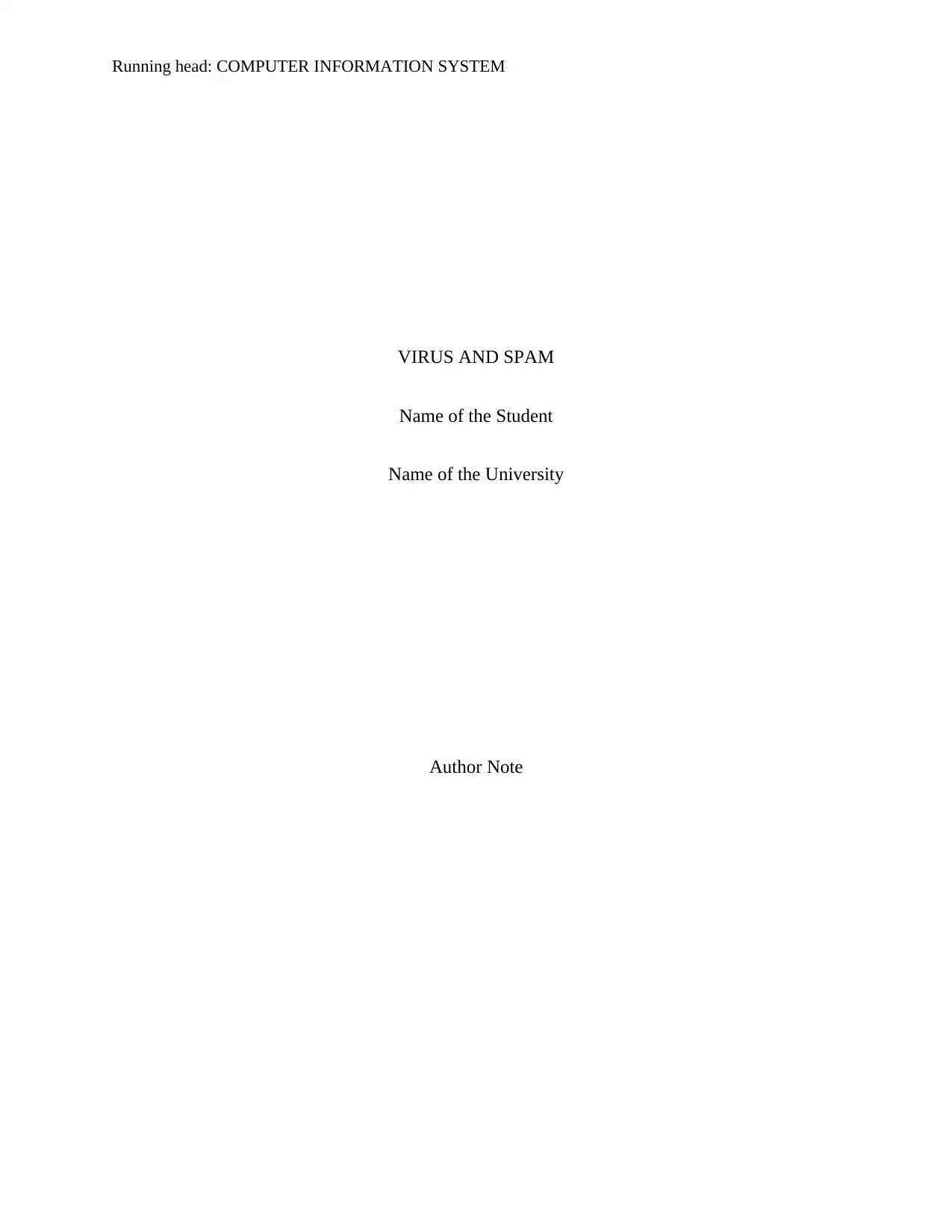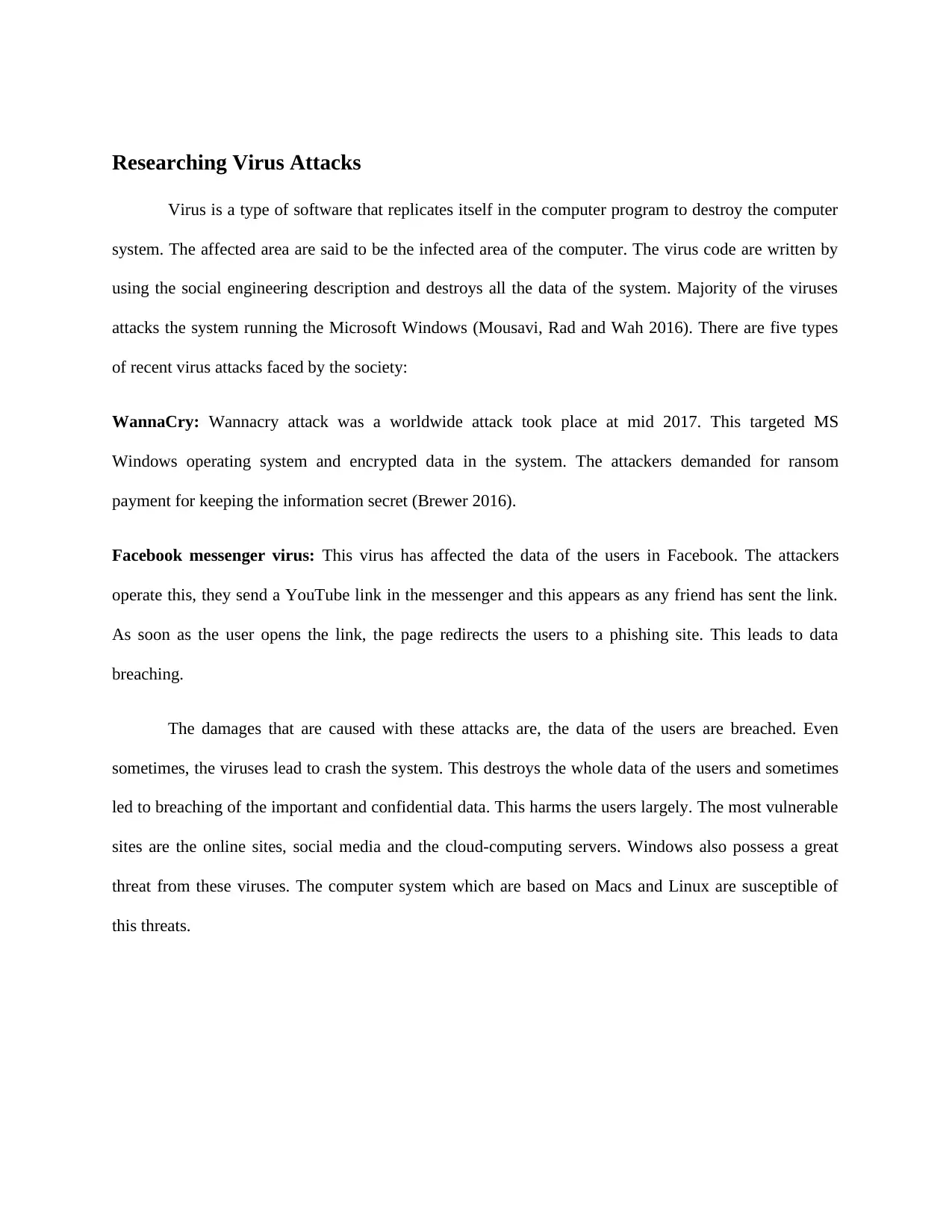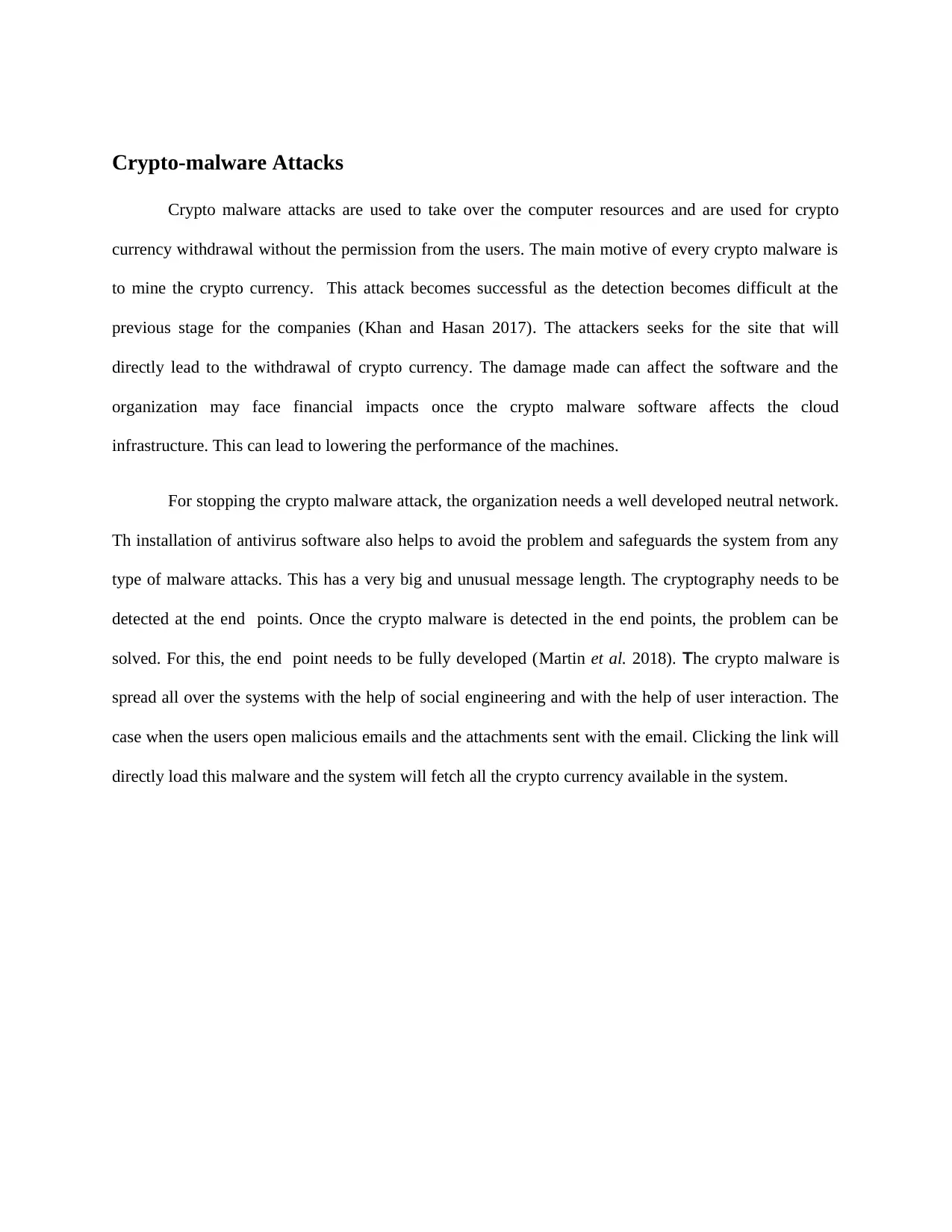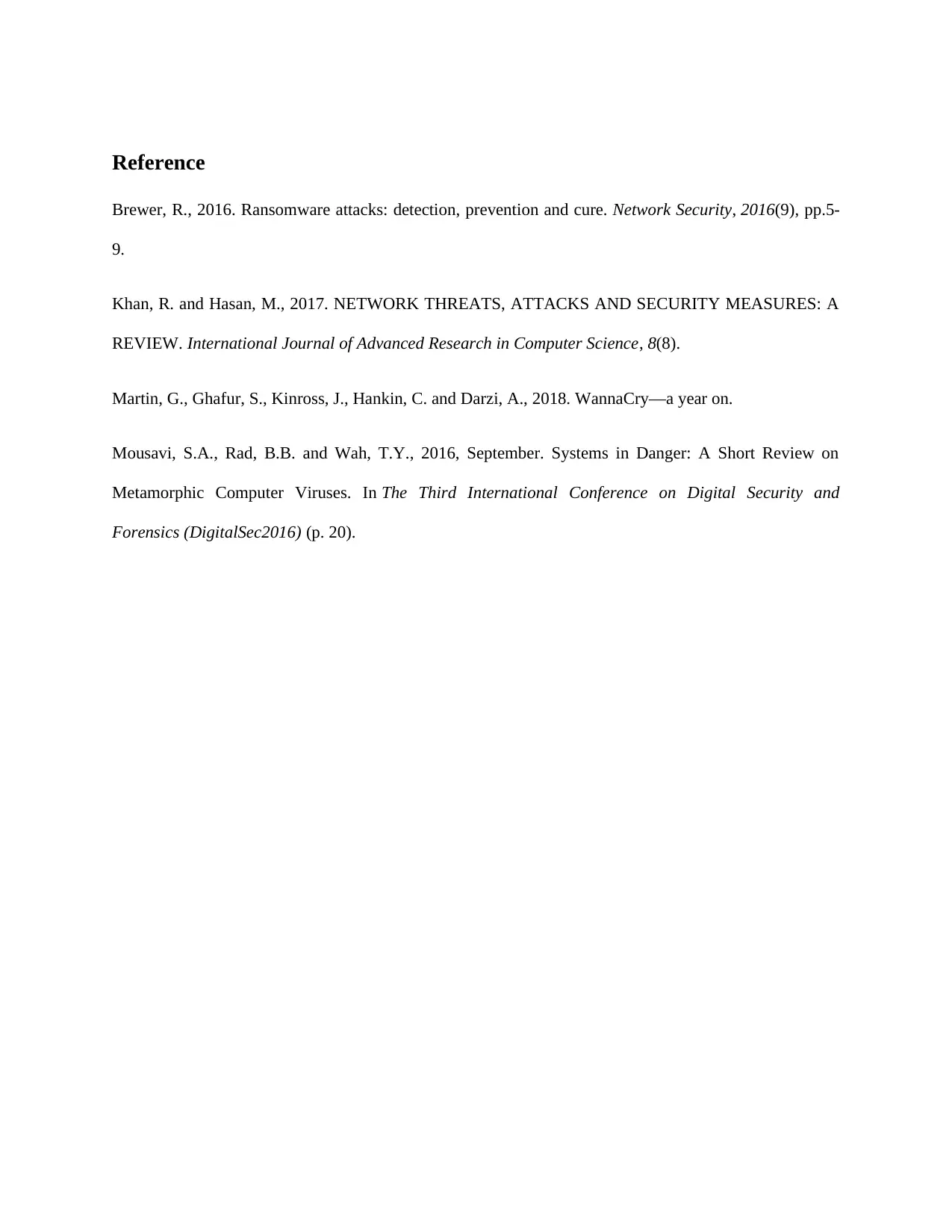University CIS Assignment: Exploring Computer Virus and Spam Attacks
VerifiedAdded on 2023/06/05
|4
|719
|500
Homework Assignment
AI Summary
This assignment delves into the realm of computer viruses and spam, analyzing various recent attacks and their impacts. It begins by defining a virus and then explores specific examples such as WannaCry, the Facebook messenger virus, and crypto-malware attacks. The assignment details the damage caused by these attacks, including data breaches, system crashes, and financial impacts, highlighting the vulnerabilities of online sites, social media, and cloud-computing servers. It then examines crypto-malware, its methods of operation, and the challenges in detection and prevention, emphasizing the need for advanced security measures like well-developed neural networks and endpoint cryptography. The assignment concludes by mentioning the spread of crypto-malware through social engineering and user interaction, such as malicious emails, and referencing several sources.
1 out of 4











![[object Object]](/_next/static/media/star-bottom.7253800d.svg)